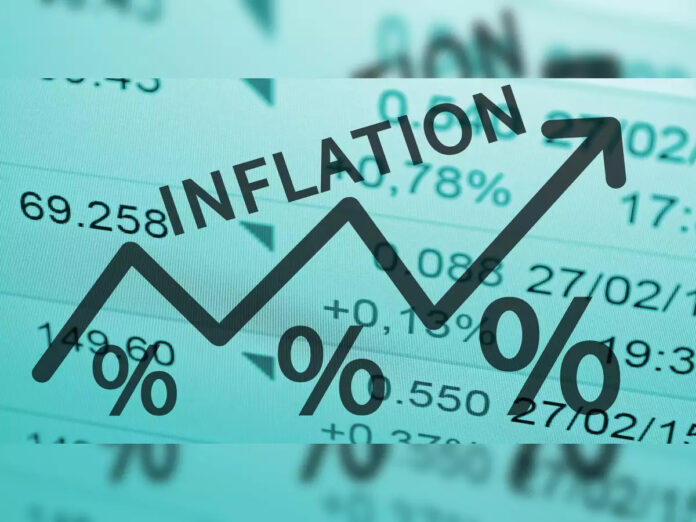India has faced significant inflationary challenges in recent years, with supply-side factors heavily influencing price levels. The annual inflation rates reached as high as 6.0% and 6.4% during the fiscal years 2020-21 and 2022-23, respectively. These spikes were primarily driven by pandemic-related disruptions in supply chains, soaring commodity prices, ongoing pressures in the service sector, and elevated core inflation. However, recent trends indicate a shift, with the Consumer Price Index (CPI) inflation easing to 5.2% in 2023-24 and expected to stabilize between 4.2% and 4.6% for the remainder of the year.
Understanding the Trends in CPI Inflation
The Consumer Price Index measures the average change in prices paid by consumers for a variety of goods and services, serving as a key indicator of inflation and the purchasing power of consumers. The fluctuations in CPI inflation can significantly impact economic growth, consumer behavior, and financial stability.
The inflationary pressures seen in the past few years stemmed from several interrelated factors. The pandemic disrupted global supply chains, leading to shortages and increased prices for many essential items. Rising commodity prices, further exacerbated by geopolitical tensions and logistical challenges, contributed to the inflationary landscape. Additionally, persistent service sector inflation, particularly in areas like hospitality and travel, played a role in the overall rise in price levels.
Current Environment: Easing Inflationary Pressures
Despite these challenges, recent developments show a positive shift in inflation trends. The decline to 5.2% in 2023-24 is a notable achievement, especially considering the complex economic environment.
Several factors have contributed to this easing of inflation. Government initiatives aimed at strengthening supply chain resilience are beginning to yield results. Policies that focus on boosting domestic production and reducing reliance on imports have helped stabilize prices for essential goods. Furthermore, a decrease in global commodity prices has alleviated some of the inflationary pressures that had previously burdened the economy.
The monsoon season, typically a period of concern for food prices due to potential weather-related disruptions, has also influenced inflation expectations. While fluctuations in prices are common during this time, recent assessments suggest relative stability in the agricultural sector, supporting the overall moderation in CPI inflation.
Future Projections: A Moderate Inflation Range
Looking ahead, the expected stabilization of CPI inflation within the range of 4.2% to 4.6% is encouraging. This environment not only reflects improved supply dynamics but also positions the economy for sustainable growth. The Reserve Bank of India (RBI) has indicated its ongoing commitment to monitoring inflation trends, ensuring that monetary policy remains aligned with both growth and price stability objectives.
A key component of this outlook is the delicate balance between controlling inflation and supporting economic growth. The RBI’s recent monetary policy decisions, including adjustments to interest rates, demonstrate a nuanced approach aimed at managing inflationary pressures while fostering a conducive environment for investment and consumer spending.
Influencing Factors for Future Inflation
While the current outlook for CPI inflation is positive, several factors could influence future trends. Global economic conditions, including fluctuations in commodity prices and potential supply chain disruptions, will remain critical. Additionally, changes in consumer demand, particularly as the economy evolves, could affect price levels.
The government’s focus on structural reforms and productivity enhancements will be vital for shaping future inflation outcomes. Investments in infrastructure, technology, and skills development can contribute to long-term price stability by improving supply capabilities and reducing production costs.
The Importance of Policy Interventions
To effectively manage inflation, strategic policy interventions will be essential. Collaboration between fiscal and monetary authorities can ensure a coordinated approach to addressing emerging challenges. For instance, targeted fiscal measures that support vulnerable populations during inflationary periods can help mitigate adverse effects on consumer sentiment and spending behavior.
Enhancing transparency in pricing mechanisms, particularly in essential goods and services, can also help manage inflation expectations among consumers. Clear communication from policymakers regarding inflation targets and strategies will foster confidence and encourage informed economic choices.
In summary, the decline in CPI inflation from 6.4% to 5.2%, along with the projected range of 4.2% to 4.6%, reflects a significant turnaround in India’s economic situation. While past inflationary pressures were driven by complex supply-side dynamics, the current trends suggest a more stable environment. The proactive measures undertaken by the government and the RBI to enhance supply chain resilience and manage monetary policy effectively have laid the groundwork for sustainable growth.
Nonetheless, ongoing vigilance is necessary, as various factors may still influence future inflation trends. By maintaining a balanced approach that prioritizes both price stability and economic growth, India can navigate forthcoming challenges and foster a resilient economic environment. The commitment to effective policy interventions, structural reforms, and transparent communication will be crucial in sustaining positive momentum and ensuring that inflation remains within a moderate range in the years ahead.
Disclaimer: The thoughts and opinions stated in this article are solely those of the author and do not necessarily reflect the views or positions of any entities represented and we recommend referring to more recent and reliable sources for up-to-date information.



